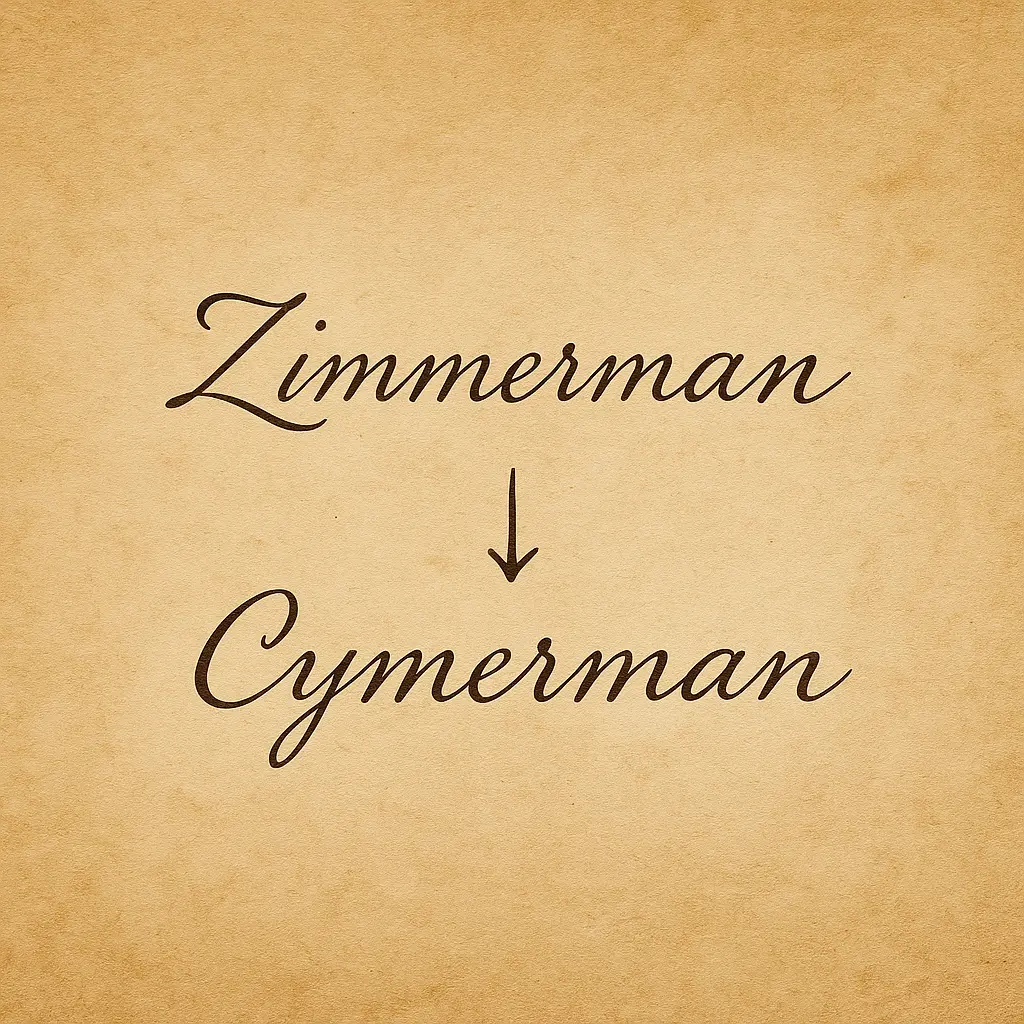
How First Names and Surnames Changed in Polish Vital Records
Published September 8, 2025 | 3 min read
How First Names and Surnames Changed in Polish Vital Records
When researching family history in Poland, one of the biggest challenges is dealing with changing names in parish and civil records. The same person may appear under different spellings, slightly altered forms, or even entirely new versions of their name. This can make genealogical research tricky, but once you understand the common patterns, it becomes easier to recognize your ancestors in the records.
Surnames – Common Variations
Surnames were especially prone to change depending on who recorded the event, what language was in use, and how carefully the scribe was writing.
1. Cyrillic vs. Latin Alphabet
During the period of partitions, records were often written in Russian Cyrillic. The transfer back into Latin letters could distort names:
- Haftman → Gaftman (initial H often became G in Russian transcription).
2. Diminutives and Extended Forms
Surnames sometimes evolved into diminutives or extended forms:
- Kuśmierz → Kuśmierczyk (adding -czyk to mark "son of").
3. Feminized Surnames
Daughters were sometimes given specifically feminized surname forms:
- Kujawa → Kujawianka ("girl from the Kujawa family").
- Szymanek → Szymankowiczówna (literally "daughter of Szymanek").
4. Spelling Mistakes and Inconsistencies
Simple errors by the priest or clerk introduced variations:
- Wódka → Wudka
- Morawski → Murawski
5. Phonetic Transcriptions
Names were sometimes written as they were pronounced, especially foreign ones:
- Zimmerman → Cymerman
- Schneller → Szneler
6. Married Names vs. Maiden Names
Women were often recorded under their husband’s surname, not their maiden name, which complicates tracing maternal lines.
First Names – Shifts and Substitutions
First names also changed for a variety of reasons, from clerical errors to cultural adaptation.
1. Name Interchangeability
Some people were recorded under one of their multiple given names, and used that name in daily life:
- Karol Franciszek may appear simply as Franciszek.
2. Clerical Mistakes
Copyists often confused similar names:
- Anna → Joanna
3. Translations of Names
As Polish records modernized, some names were translated into Polish equivalents:
- Gotlib → Bogusław or Bogumił
Why This Matters for Genealogy
These changes mean that searching for an ancestor requires flexibility. A rigid search for the exact spelling often leads to dead ends. Instead, genealogists learn to:
- Consider phonetic variations.
- Look for diminutive or feminized forms.
- Be aware of translation between languages (Polish, German, Russian, Latin).
- Cross-reference dates, places, and family members rather than just relying on the exact name.
Final Thoughts
Polish records reflect the country’s complex history of shifting borders, languages, and administrative practices. Understanding how names changed—whether through phonetics, errors, translations, or social conventions—helps you recognize your ancestors even when they seem to hide behind new identities.
For genealogists, every variation is not just a hurdle but also a clue. The evolution of a name can reveal cultural influences, family traditions, or even the handwriting habits of a parish priest.
